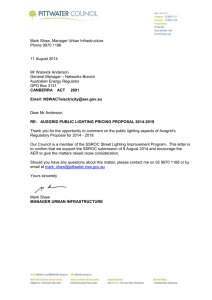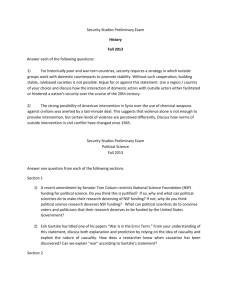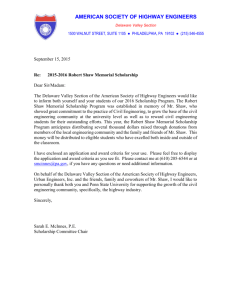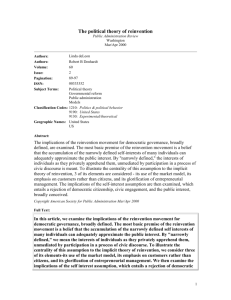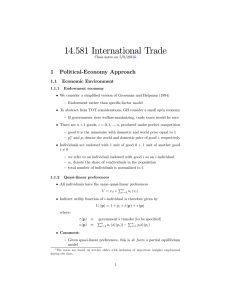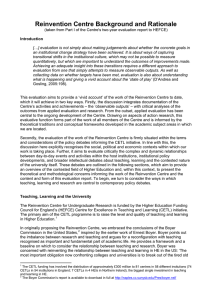Ivana Rapošová, 333300 SOC 576 „The conflictual politics of place
advertisement
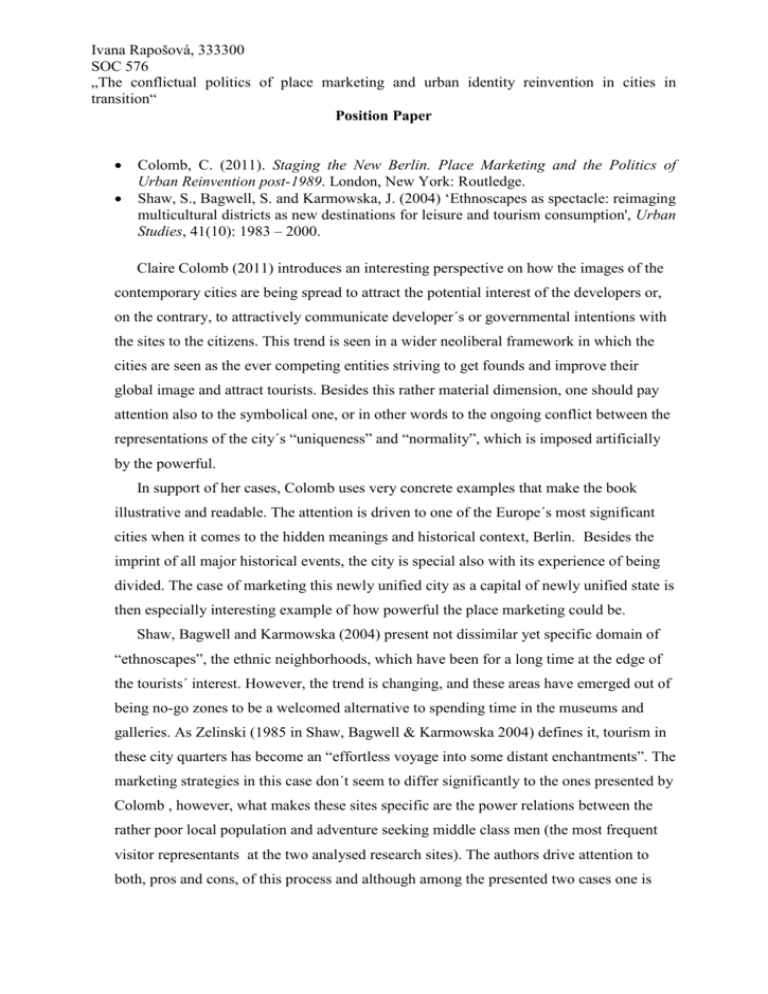
Ivana Rapošová, 333300 SOC 576 „The conflictual politics of place marketing and urban identity reinvention in cities in transition“ Position Paper Colomb, C. (2011). Staging the New Berlin. Place Marketing and the Politics of Urban Reinvention post-1989. London, New York: Routledge. Shaw, S., Bagwell, S. and Karmowska, J. (2004) ‘Ethnoscapes as spectacle: reimaging multicultural districts as new destinations for leisure and tourism consumption', Urban Studies, 41(10): 1983 – 2000. Claire Colomb (2011) introduces an interesting perspective on how the images of the contemporary cities are being spread to attract the potential interest of the developers or, on the contrary, to attractively communicate developer´s or governmental intentions with the sites to the citizens. This trend is seen in a wider neoliberal framework in which the cities are seen as the ever competing entities striving to get founds and improve their global image and attract tourists. Besides this rather material dimension, one should pay attention also to the symbolical one, or in other words to the ongoing conflict between the representations of the city´s “uniqueness” and “normality”, which is imposed artificially by the powerful. In support of her cases, Colomb uses very concrete examples that make the book illustrative and readable. The attention is driven to one of the Europe´s most significant cities when it comes to the hidden meanings and historical context, Berlin. Besides the imprint of all major historical events, the city is special also with its experience of being divided. The case of marketing this newly unified city as a capital of newly unified state is then especially interesting example of how powerful the place marketing could be. Shaw, Bagwell and Karmowska (2004) present not dissimilar yet specific domain of “ethnoscapes”, the ethnic neighborhoods, which have been for a long time at the edge of the tourists´ interest. However, the trend is changing, and these areas have emerged out of being no-go zones to be a welcomed alternative to spending time in the museums and galleries. As Zelinski (1985 in Shaw, Bagwell & Karmowska 2004) defines it, tourism in these city quarters has become an “effortless voyage into some distant enchantments”. The marketing strategies in this case don´t seem to differ significantly to the ones presented by Colomb , however, what makes these sites specific are the power relations between the rather poor local population and adventure seeking middle class men (the most frequent visitor representants at the two analysed research sites). The authors drive attention to both, pros and cons, of this process and although among the presented two cases one is Ivana Rapošová, 333300 SOC 576 „The conflictual politics of place marketing and urban identity reinvention in cities in transition“ closer to the success story than the other, the risk of distorting the local culture, networks and rhythm is still present. Seemingly, the most important message communicated by both texts is the call for more democratic, history and culture sensitive approach to the cities´ development. One may only agree with this undoubtedly important claim, however an important question must be asked: “how to achieve more democratic involvement of civil society in the decision making process?” and even more importantly “is the democratic approach towards history representations and culture possible at all?”.






